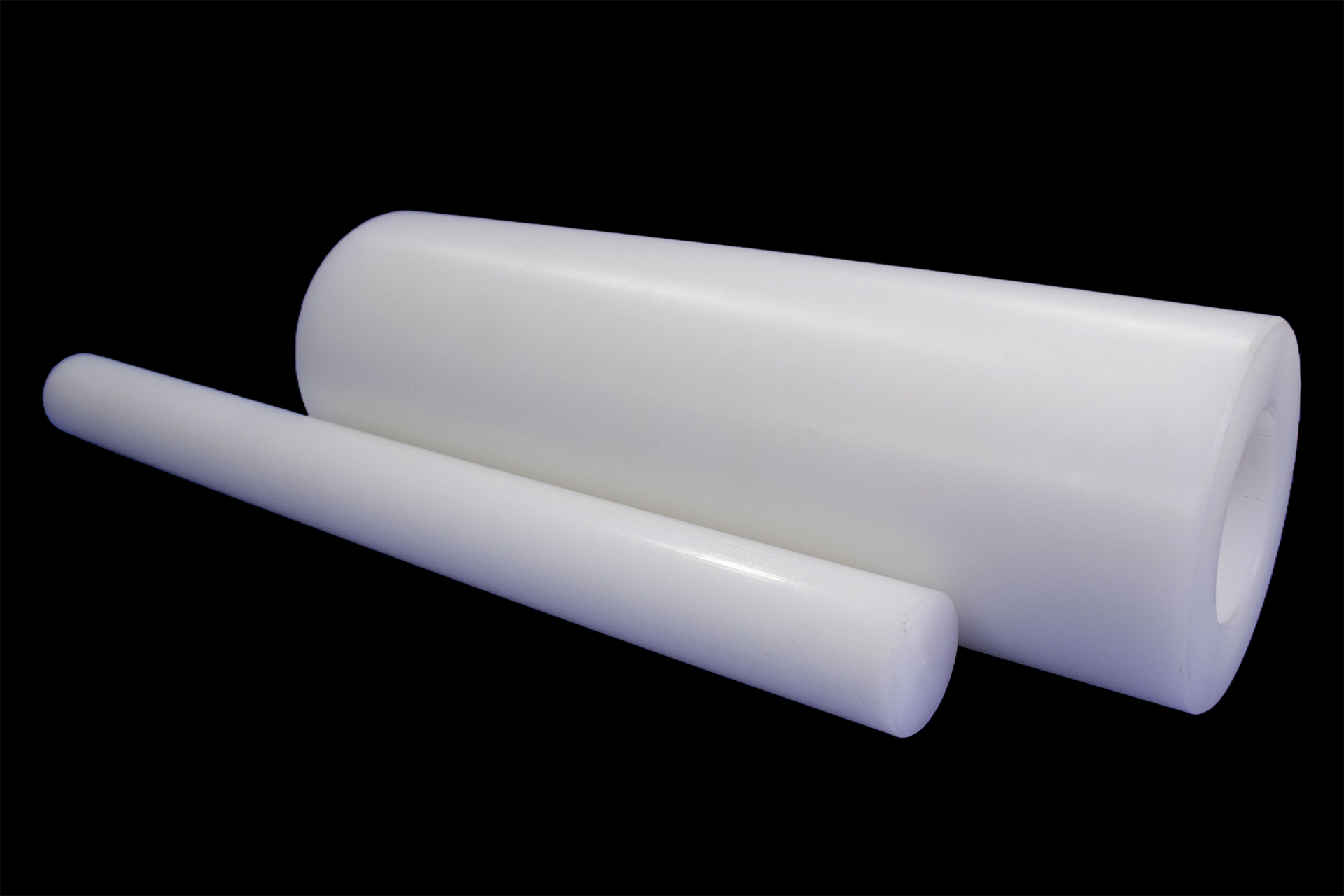
Polymat PP
Polypropylene (PP) is a widely used thermoplastic polymer known for its versatility, low density, and cost-effectiveness. It offers a balanced set of properties that make it suitable for a wide range of applications across various industries.
Mechanical Properties
- Tensile Strength: Typically around 30 to 50 MPa, providing good performance under stress for many applications.
- Impact Resistance:Offers good impact resistance, though it may become brittle at low temperatures.
- Fatigue Resistance: Performs well over repeated stress cycles, making it suitable for applications with cyclic loading.
- Low Coefficient of Friction: Exhibits a low coefficient of friction, which reduces wear in moving parts and enhances longevity.
- Modulus of Elasticity: Around 1.5 to 2.0 GPa, providing adequate rigidity and stability under load.
- Creep Resistance: Shows moderate resistance to deformation under constant load, with acceptable long-term dimensional stability.
Thermal Properties
- Continuous Service Temperature: Suitable for use up to approximately 100°C (212°F), beyond which thermal performance may degrade.
- Thermal Stability: Remains stable in moderate thermal environments, though high temperatures may affect its properties.
- Thermal Expansion: Exhibits moderate thermal expansion, which should be accounted for in precision applications.
- Glass Transition Temperature: Around -10°C (14°F), below which PP can become brittle.
- Thermal Insulation Properties: Provides effective insulation against heat, which helps in managing thermal conditions in various applications.
- Thermal Oxidative Stability: Generally stable in moderate temperature oxidative environments; however, long-term exposure to high temperatures may lead to degradation.
Chemical Properties
- Chemical Resistance: Highly resistant to many acids, bases, and organic solvents, making it suitable for a wide range of chemical environments.
- Resilience to Corrosive Environments: Performs well in environments with moderate corrosive chemicals, though prolonged exposure to strong acids or bases may cause degradation.
- Resistance to Hydrolysis: Shows moderate resistance to moisture and steam, but extended exposure can affect its mechanical properties.
- Non-reactivity: Generally stable with most chemicals, ensuring consistent performance in various applications.
- Durability in High-Temperature Chemical Environments: Effective in many chemical environments, but high temperatures and aggressive chemicals can impact performance.
- Moderate Permeability: Has moderate permeability to gases and liquids, which should be considered for containment applications.
Application Sectors
Automotive
Utilized in automotive parts such as bumpers, dashboards, and interior components due to its good mechanical properties and resistance to automotive fluids.
Packaging
Widely used in packaging materials, including containers, films, and bottles, due to its low cost, good chemical resistance, and ease of processing.
Textiles
Applied in textiles and fibers for clothing, upholstery, and industrial fabrics, benefiting from its durability and resistance to abrasion.
Consumer Goods
Found in a variety of consumer products, including household items and appliances, due to its versatility and cost-effectiveness.
Medical
Used in medical devices, packaging, and components, where its chemical resistance and low reactivity are advantageous.
Industrial Manufacturing
Employed in industrial components such as piping, fittings, and storage containers, where its chemical resistance and mechanical properties are beneficial.
Electronics and Electrical
Applied in electrical insulators and connectors, leveraging its good insulating properties and thermal stability.
Construction
Utilized in construction materials such as pipes, fittings, and insulation due to its resistance to moisture and chemicals.
Energy
Used in various energy sector applications, including components for renewable energy systems and storage containers.
Agriculture
Employed in agricultural films, containers, and irrigation systems, benefiting from its durability and resistance to environmental conditions..
Defense and Military
Applied in various defense-related products and components where durability and chemical resistance are required.
Food and Beverage
Used in food packaging and handling equipment, where its compliance with safety standards and resistance to cleaning agents are essential.